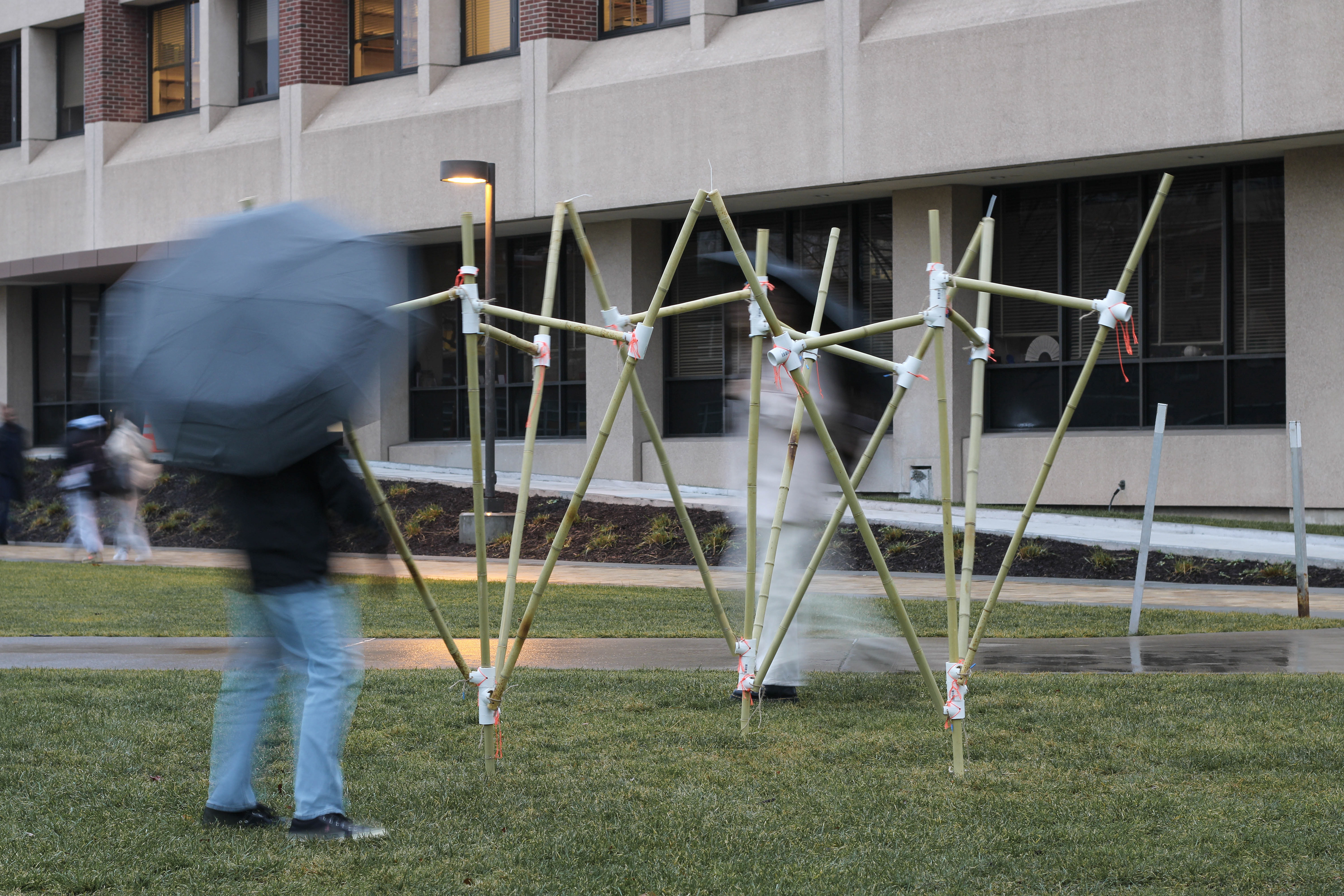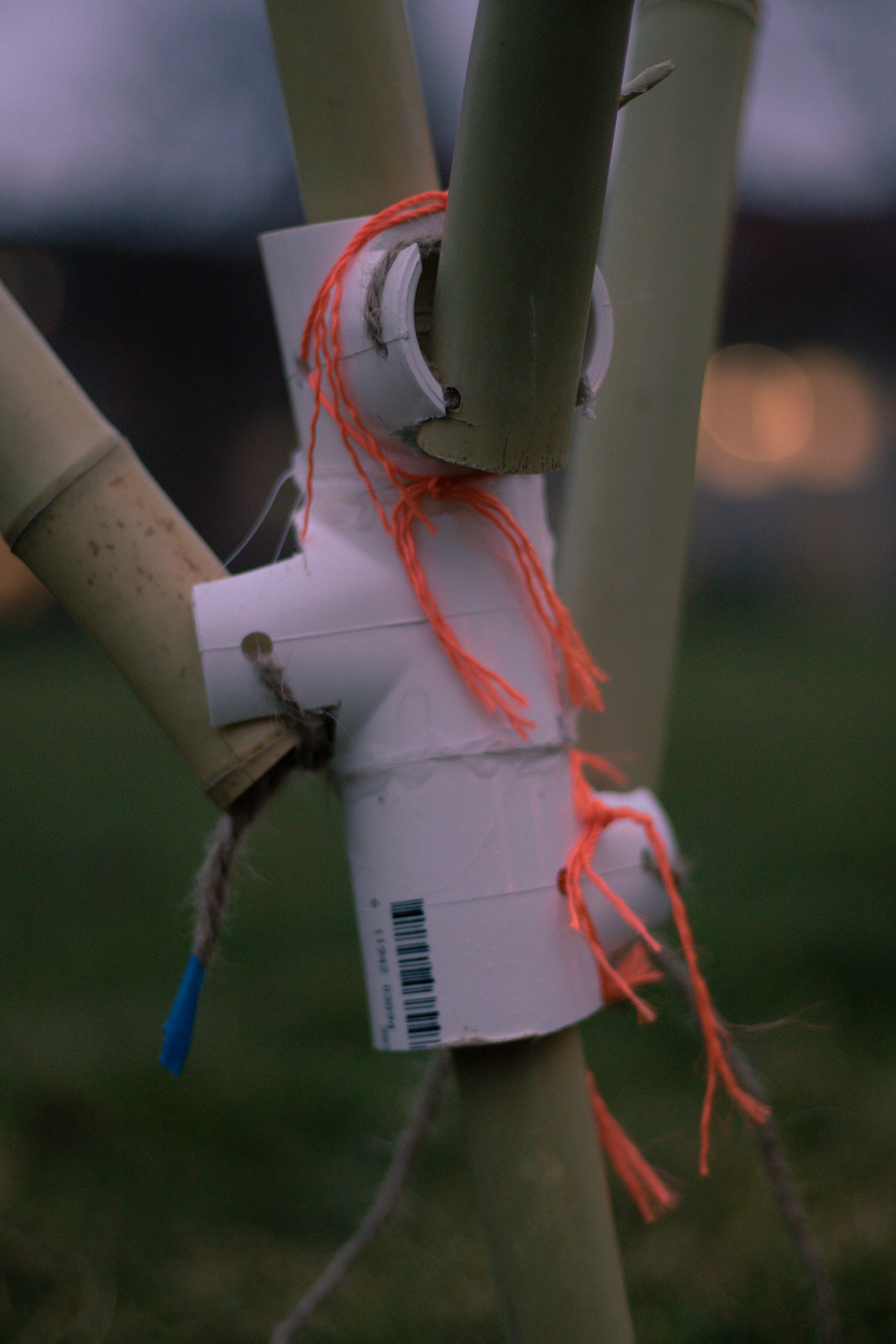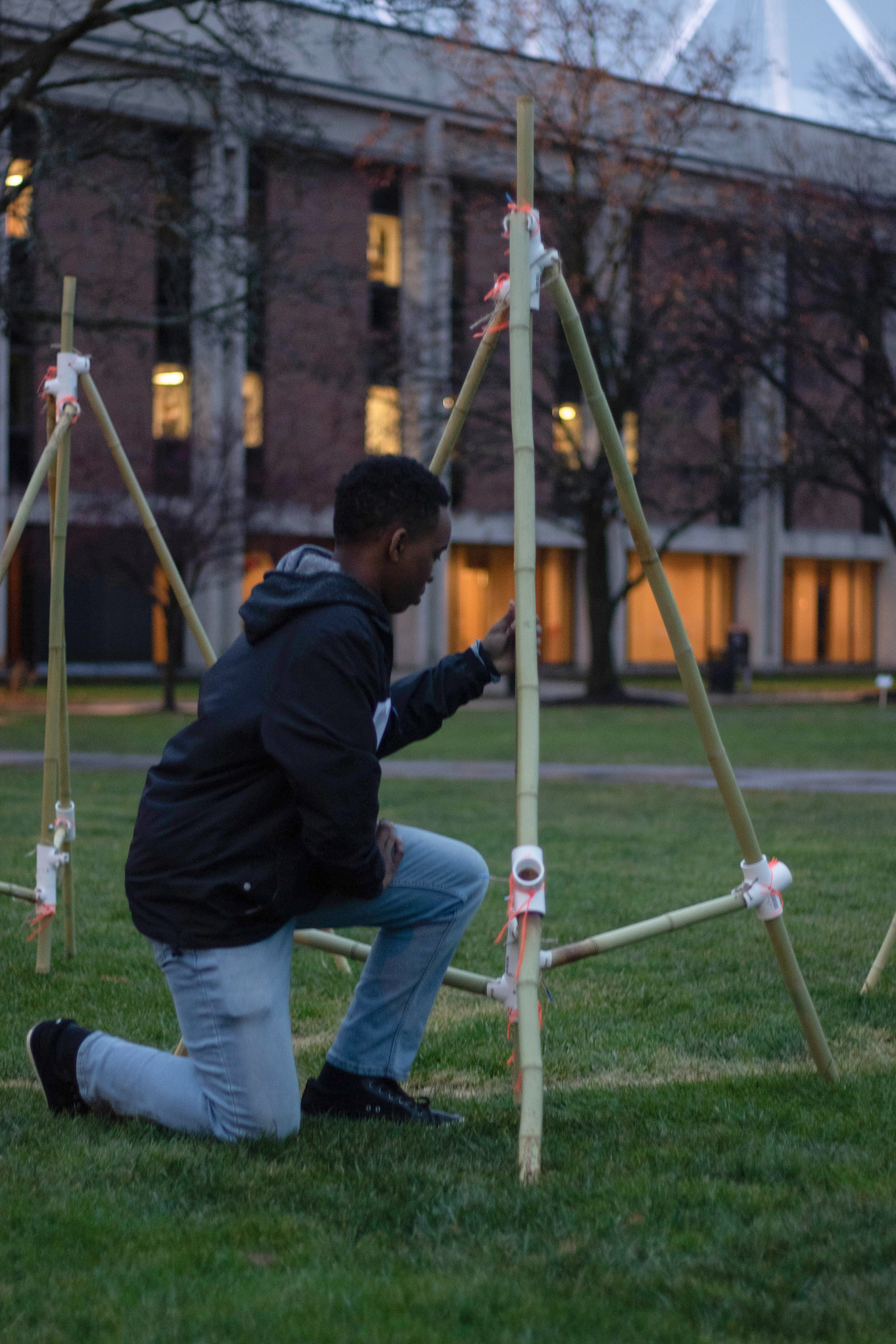Location: Calabar, Nigeria
Instructor: Joseph Godlewski, ARC 207
Date: Fall 2022
Strange compound(s) is an attempt to reconcile the values of film and Nigerian society, culminating in a film school to foster social interaction and interrogate the diverse ways in which film is produced while upholding the spirit of existing regional architectural typologies. The site strategy is defined by a dialectic between sterotomics and tectonics. The rigid programming of the school is composed of a raised series of fractured concrete volumes with “loose fit” programming below.
Surrounding this raised mass is a series of courtyards for filming and screening, utilizing the walls of the compound as projection screens. Figural bamboo elements mediate the temporality of the courtyards and the stereotomy of the school, pushing, pulling, breaking, and twisting each other in a symbiotic relationship. This bamboo system is then carried out into the community as an urban tactic through a system of bamboo tripods, able to collapse to fit in film vans to be used as enclosure at filming locations. In doing so, the film vans carry this strange compound into the urban environment, documenting, creating, and ultimately changing the spatial and social landscape of Calabar as a network of new, “strange ” compounds.
the concept:
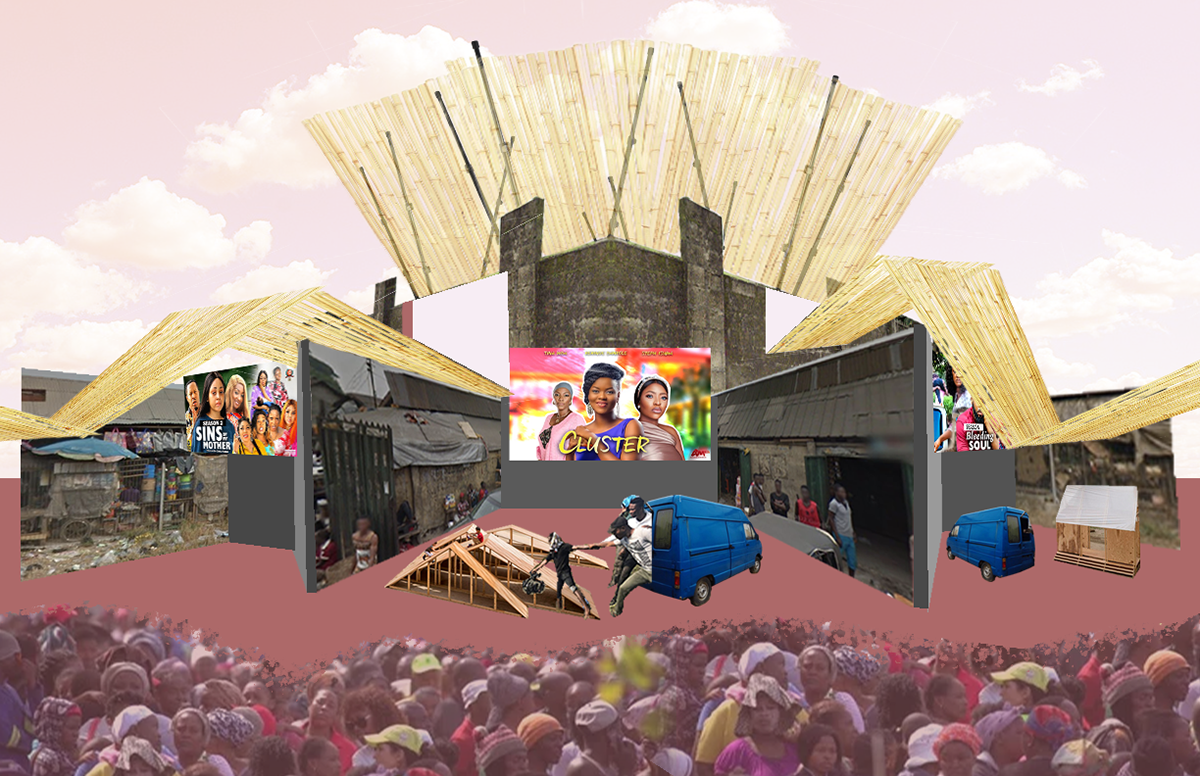
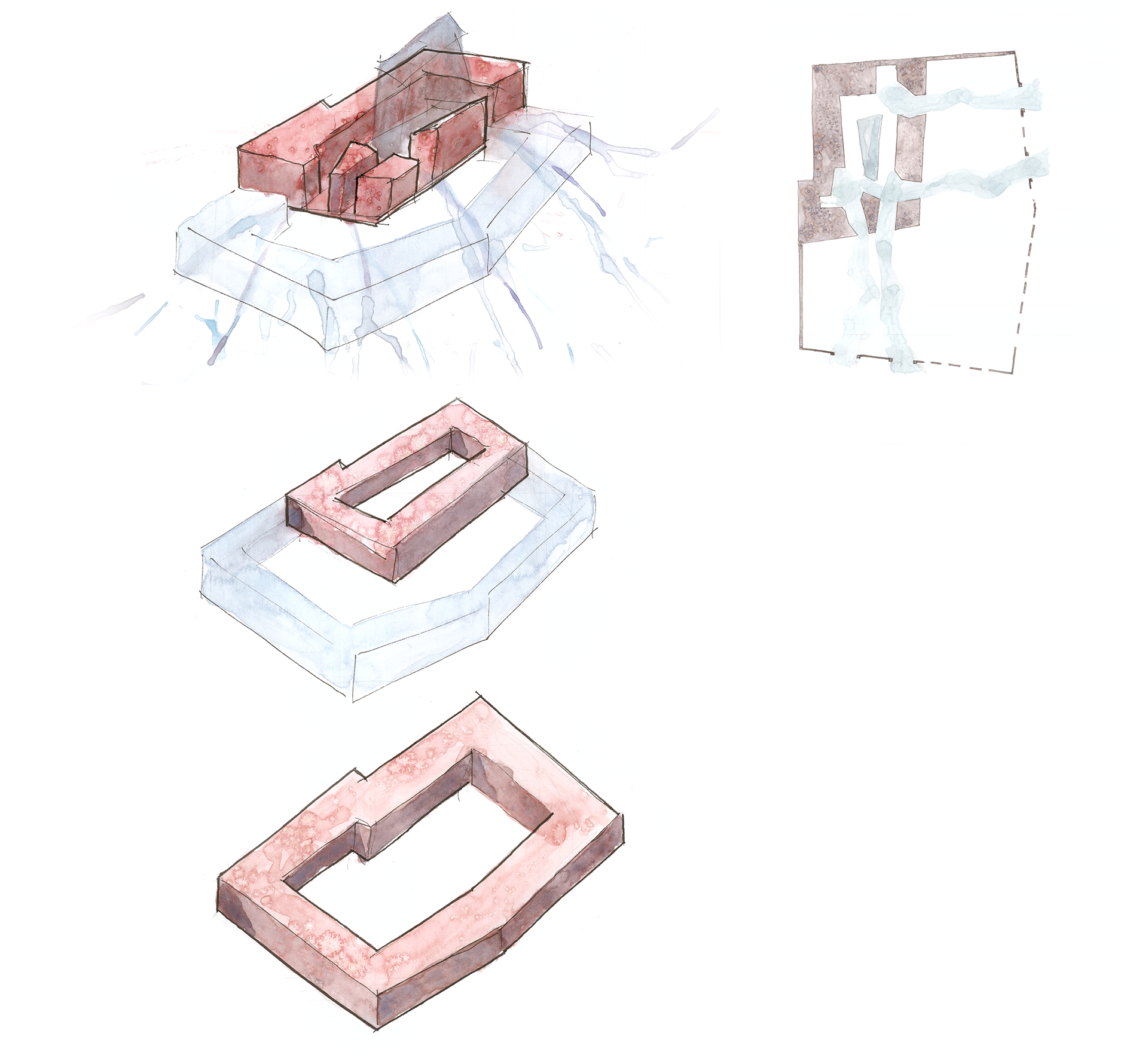
Seeking to provide a balance between the walled compound typology and the inherent need for cinematography production to encounter and expose daily life, the film education center interrogates dialectic relationships between bamboo and concrete - light and heavy.
The conventional compound is lifted off of the ground, freeing space for movie production. This concrete massing is morphed, changed, and transformed by figural bamboo elements that implicitly create spaces while designating areas for shooting and public use.
After pulling and breaking the form of the school, the bamboo elements are lifted and form a light and airy enclosure around the library space on the first floor. Around the library, programming is loose, in keeping with conventional Nigerian use cases. Video production, cafe space, and office space occupy the same area physically but are separate temporally. As such, the entire compound becomes a living, breathing, changing entity, constantly transforming and reforming with each new use case and public occurance.
the strategy:
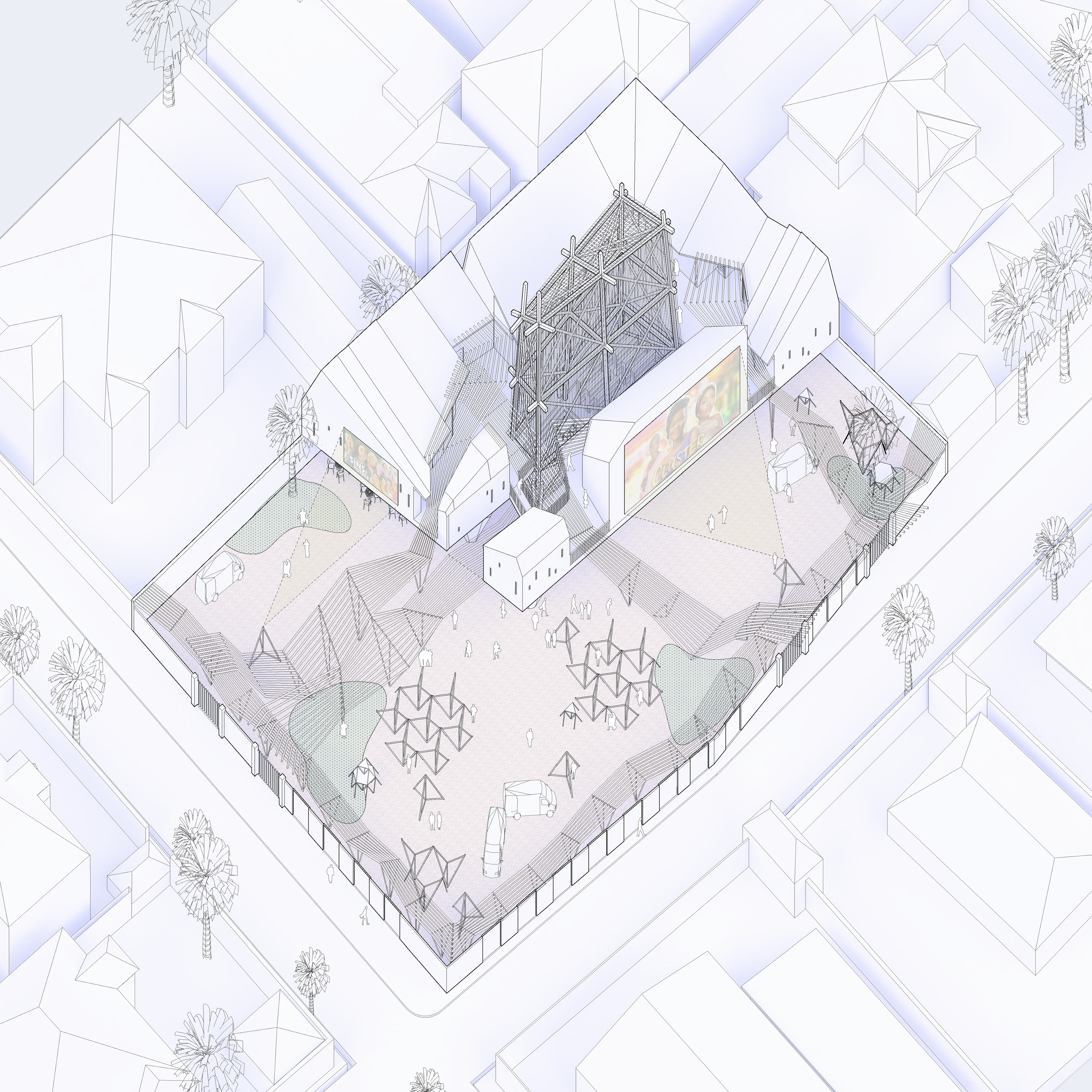
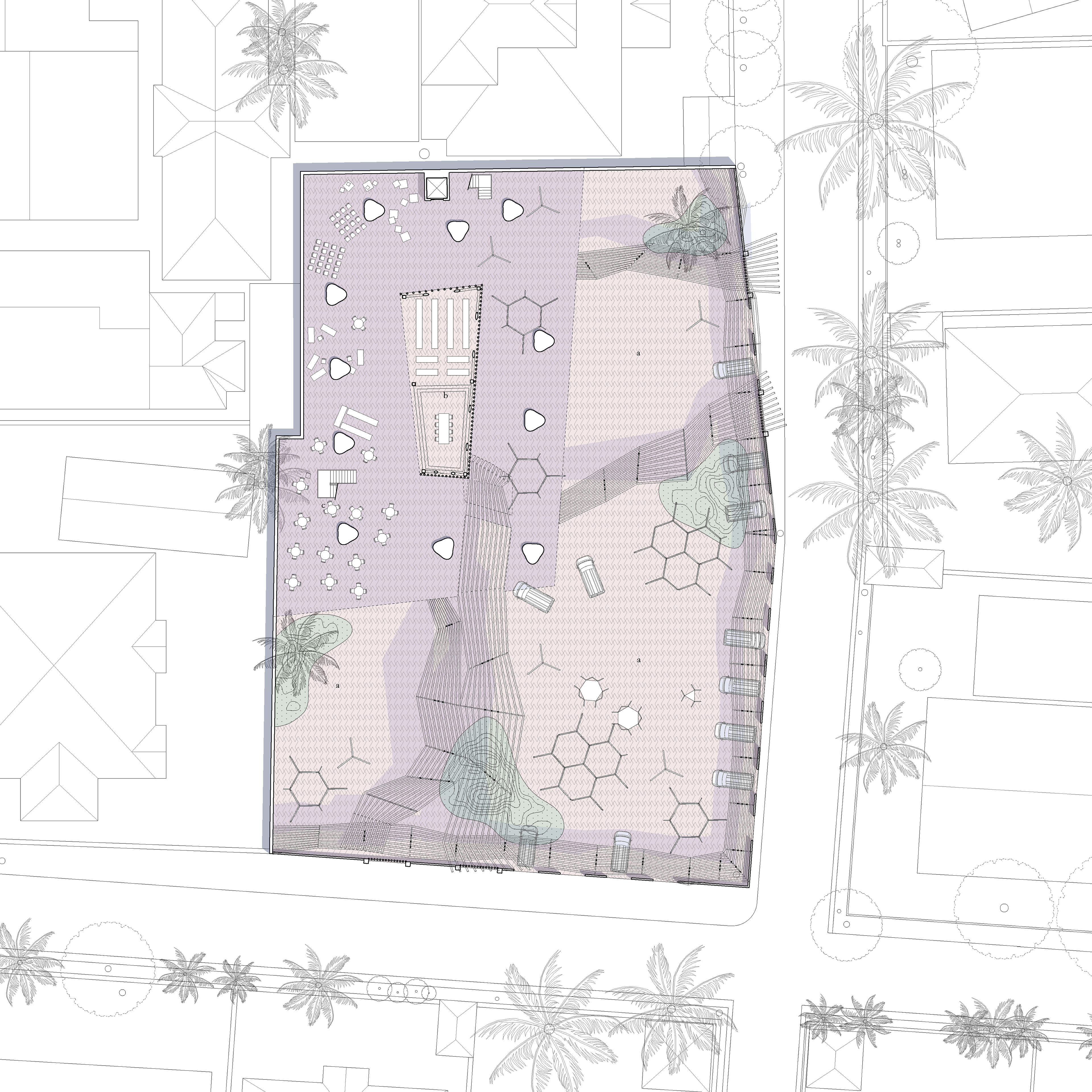
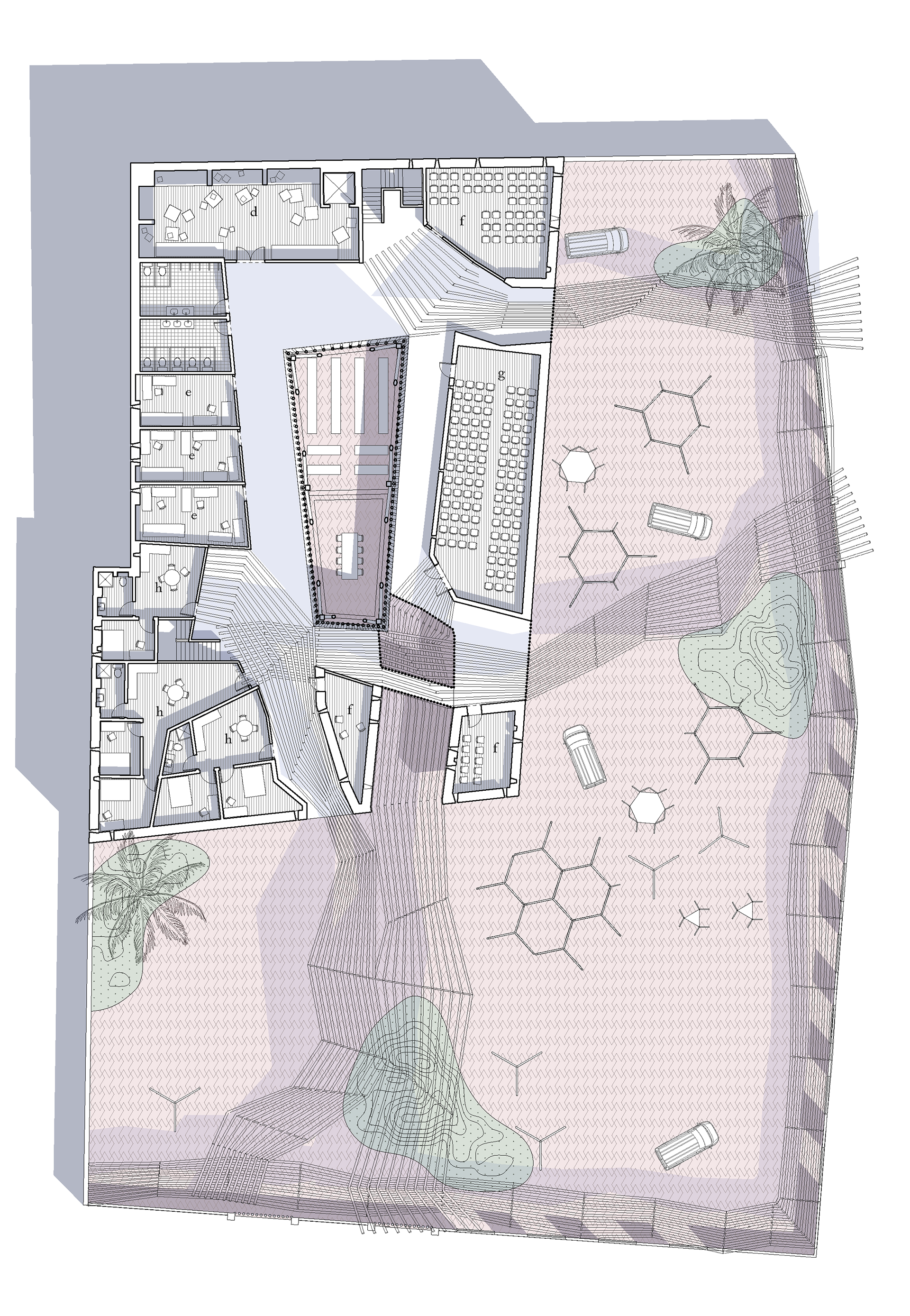


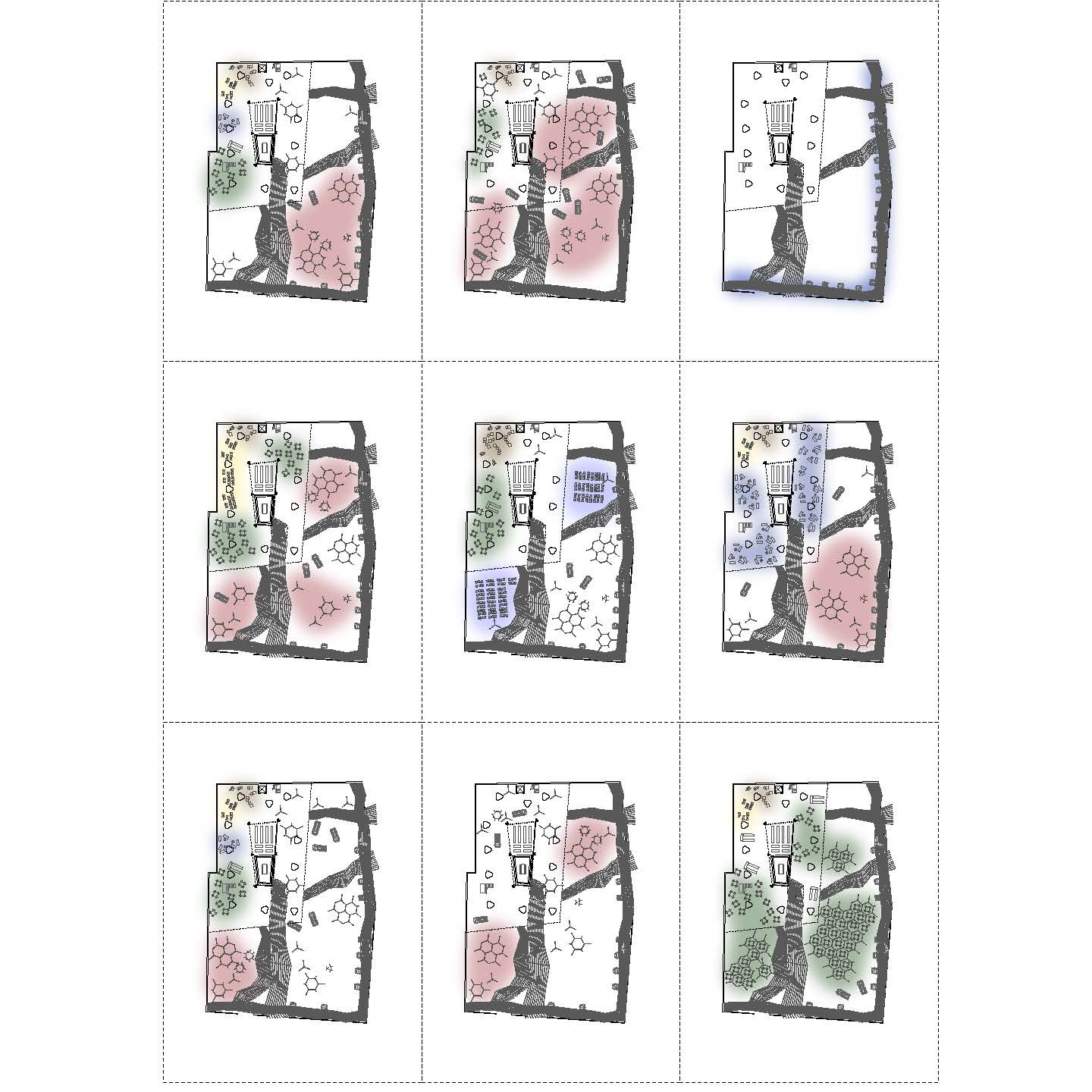

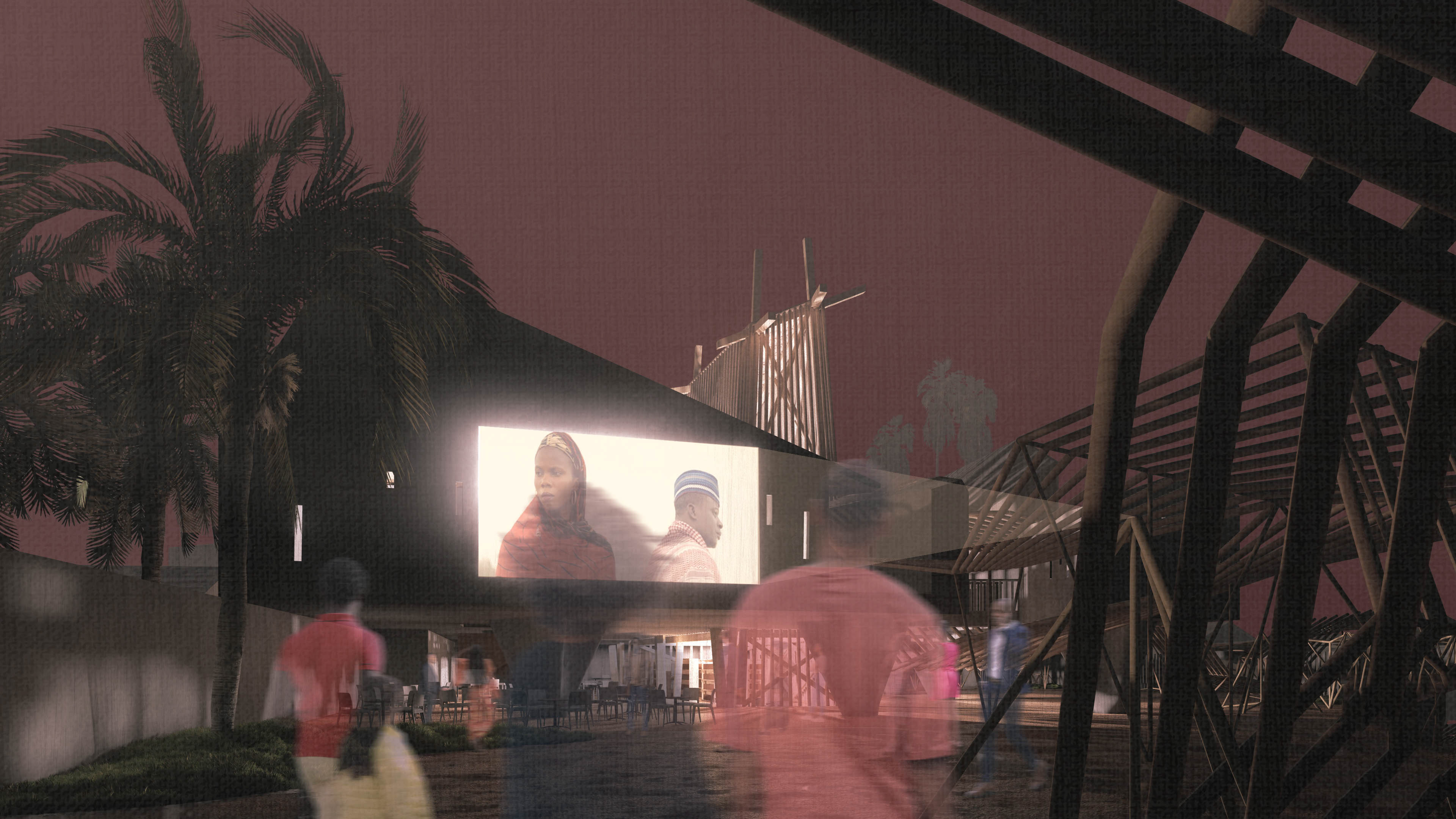

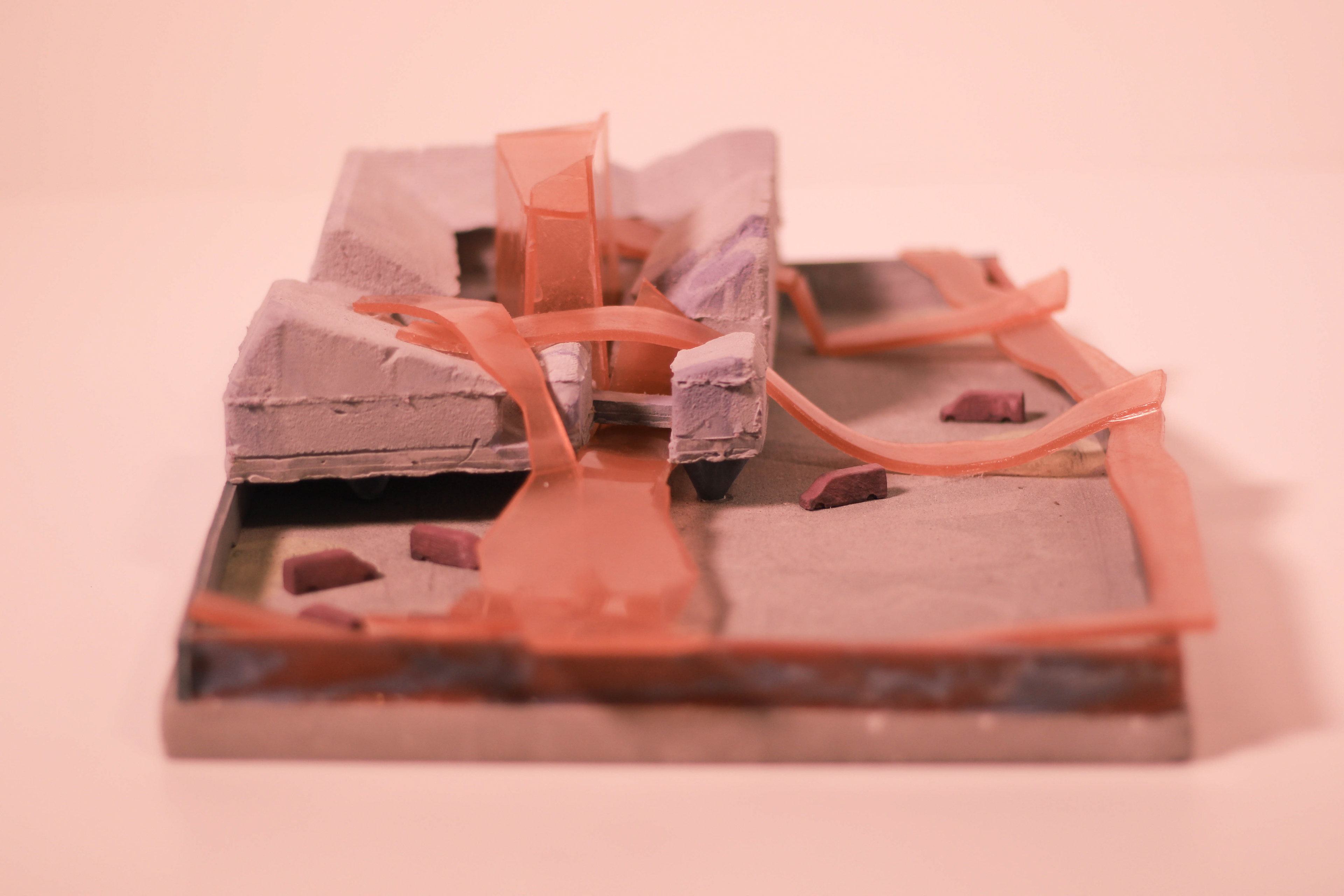

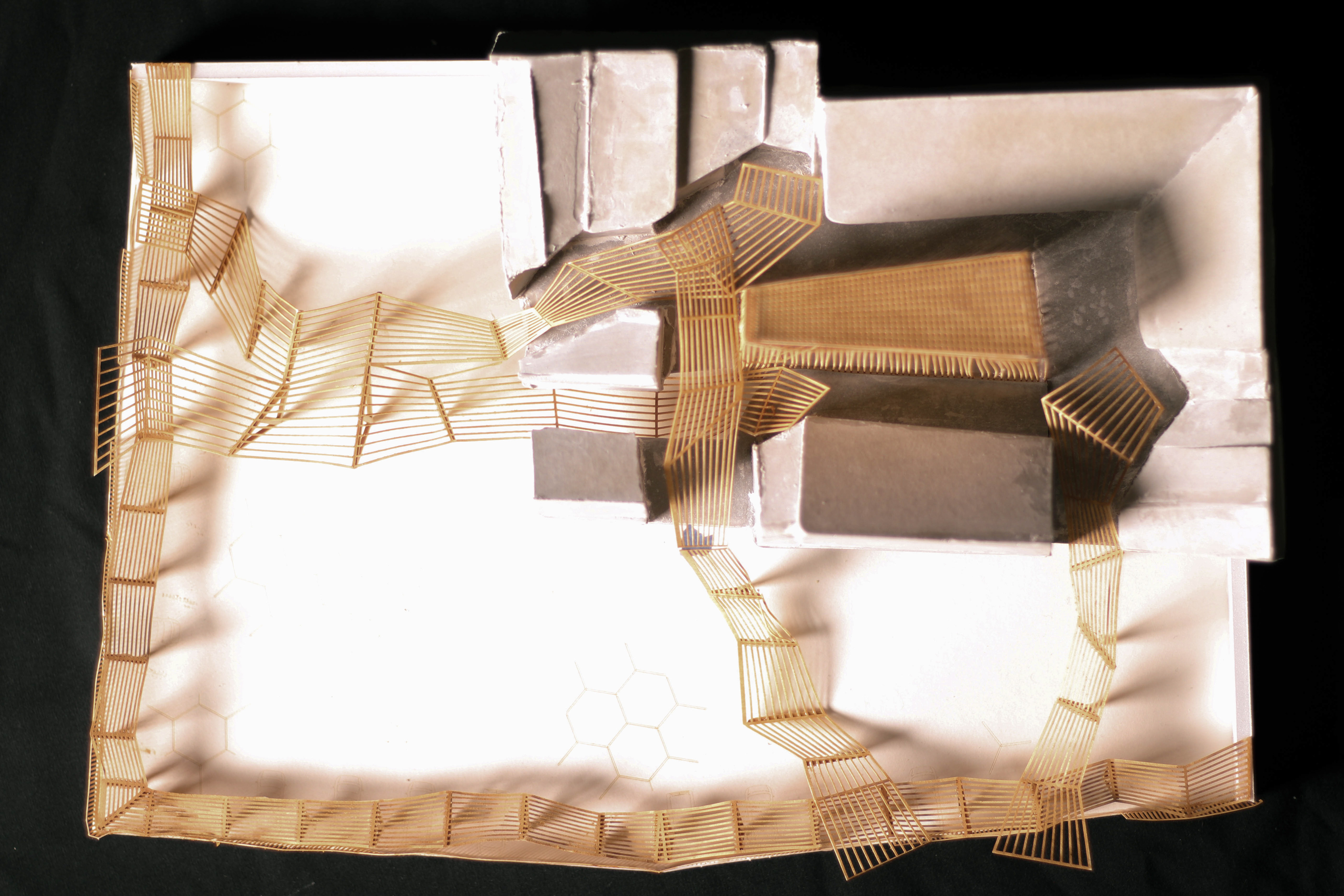

the tactic:
Equally important to this project is a tactical speculation on the transformative power of aggregated design. The camera tripod is taken as precedent due to its tight relationship with the film industry. This form is then adapted to native materials and the quick transformations of movie sets, used both independently and together to form systems of enclosure and platform. Independently, each movie van has the ability to slightly alter the urban space in order to film, but together, these forms create a thriving nexus of creativity, modulated through the simplicity and creativity of the bamboo tripod.
The model tripods were constructed at 3/4”=1” scale to simulate their true spatial implications while working with commercially available bamboo. Six-foot bamboo lengths were cut to size and connected through a system of PVC and masonry wire. Like the spaces they represent, bamboo cannot be treated abstractly, but each piece must be modeled separately to fit its place. These loose-fit connections represent the loose-fit programming present in the main film school.



